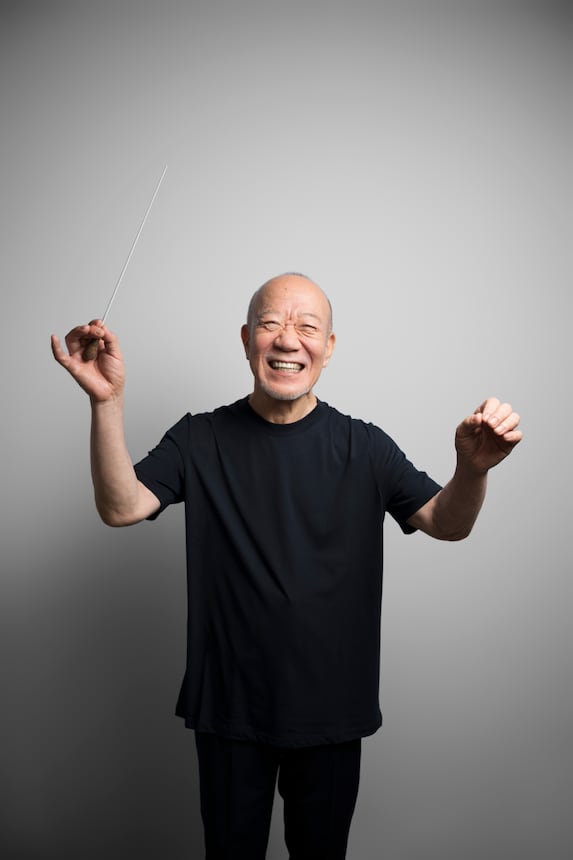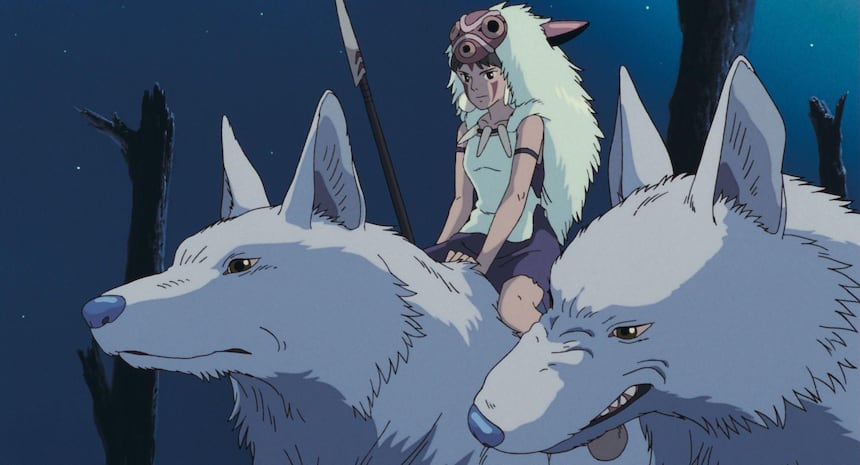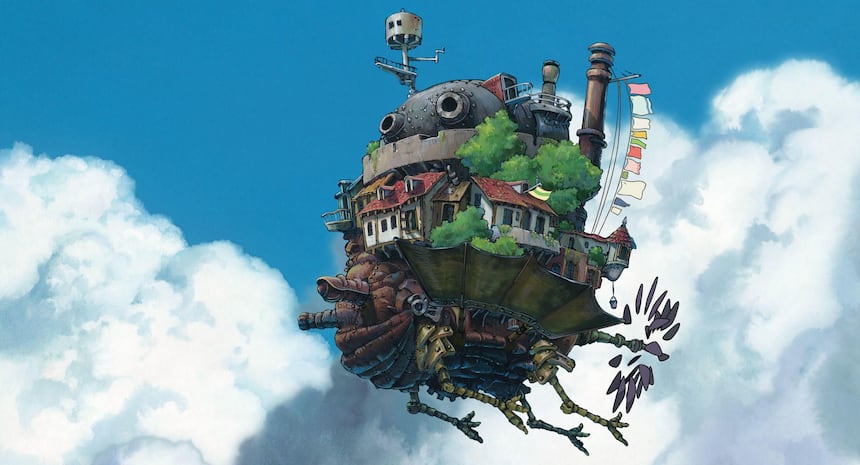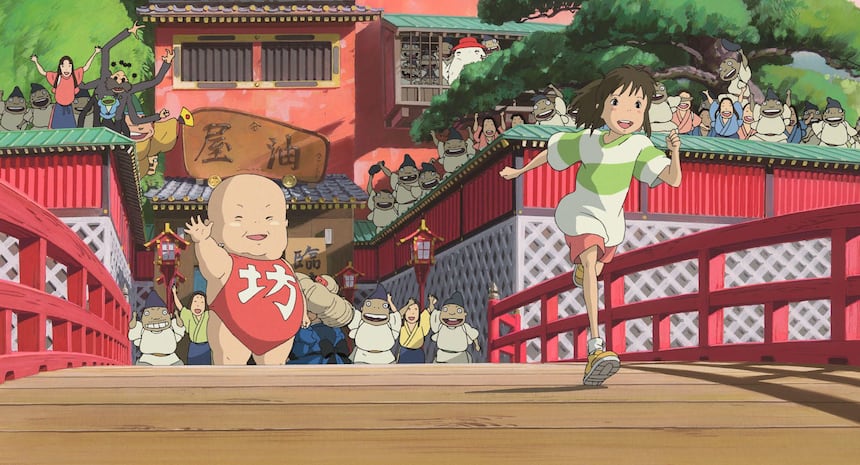What would cinema be without music? The best directing and most captivating stories on the big screen share at least one central protagonist: the soundtrack. It’s the marriage of sound and screen that breathes life into any performance, ignites the imagination and, ultimately, carries us away. Several legendary partnerships have left their mark on our collective memory by demonstrating this symbiotic relationship, – Alfred Hitcock and Bernard Herrmann, Federico Fellini and Nino Rota, Sergio Leone and Ennio Morricone, and Steven Spielberg and John Williams – to name a few. Now, Joe Hisaishi and director of Studio Ghibli Hayao Miyazaki are well and truly part of this lineage.

Although his international breakthrough came via Miyazaki and Studio Ghibli productions, Hisaishi already enjoyed success within Japan for his other works. Born in 1950 in Nagano, Mamoru Fujisawa (his given name) discovered classical music at the age of 4, learning the violin at a school that adopted the Suzuki method and in his teens, he developed an early passion for composition. Studying at the Kunitachi University of Music in the early 1970s allowed Hisaishi to become acquainted with the characteristics of minimalist music, which he later applied to his own compositions. From his earliest works, whether personal or commissioned for anime such as Gyātoruzu, Sasuga no Sarutobi (Ninja Academy), or Futari Daka (Full Throttle), he was using the artist name Joe Hisaishi, an homage to the American musician and composer Quincy Jones (“Quincy” is pronounced “Kuinshī” in Japanese, written with the same kanji as “Hisaishi,” and “Jones” becomes “Joe”).
Classical music, particularly minimalism, played a significant role in Hisaishi’s work from an early stage. While, initially, his compositions featured heavy influences from Japanese pop, electronic, and New Age music, Hisaishi developed his own style by drawing inspiration from proponents of minimalism like Philip Glass, Terry Riley, John Adams, and Steve Reich. He explains, “My sources of inspiration are manifold, and it’s challenging to distinguish them all [sic]. I primarily compose modern works, and, of course, there are thousands of external influences that shape me; it’s the same when I conduct. But when I first heard Terry Riley, it was a profound shock.” In 1981, Hisaishi released his first album, MKWAJU, which was followed by Information a year later, both of which featured electro-minimalistic influences. Since then, the composer has created over a hundred pieces for film and 30 studio albums.
Joe Hisaishi’s fame has long extended far beyond Japan. In Europe, the West, and worldwide, he’s now counted regularly amongst the most esteemed contemporary conductors and composers. Hisaishi, who recently conducted the Wiener Philharmoniker, recalls the different reception of classical music in various countries: “One can say that classical music originated in Europe; that’s where it all began. You can also feel it during concerts. The audience is very enthusiastic, very proud of ‘their’ music. When I perform this music in Japan, it is also well-received, but the audience is much more reserved. This is in part due to cultural differences; in our culture, it’s not commonplace for people to show their emotions so overtly.”
These “restrained” emotions however do not hinder Japanese culture from deeply moving us – whether it be by cinema, visual arts, or in music. Anyone who’s ever experienced a Studio Ghibli film knows this well. Hisaishi’s first collaboration with Miyazaki dates back to 1983 with the animated film Nausicaä of the Valley of the Wind – released even before the studio’s creation (which happened two years later precisely thanks to the success of Nausicaä). Since then, the two have been inseparable. After the initial works, including Castle in the Sky (1985), My Neighbor Totoro (1988), or Kiki’s Delivery Service (1989), Studio Ghibli, like Japanese cinema in general, began in the 1990s to expand beyond its borders, with the success of Porco Rosso (1992), Princess Mononoke (1997), and Spirited Away (2001). The Japanese alternative to Disney asserts itself not only in the cinematic realm but also in music, with Hisaishi often being compared to John Williams or Hans Zimmer. Miyazaki believes that his collaborator’s original soundtracks significantly contributed to the success of Studio Ghibli.



In one respect, there is the minimalist composer – and in another, there’s the creator of film music, whether for Miyazaki, Takeshi Kitano, or other directors. It begs the question whether Hisaishi should approach these two pillars of his art differently. It’s something he’s not certain of. “I don’t know very well myself, actually. When I compose for Miyazaki, it’s more like ‘classical symphonic music.’ When I work for myself, I lean much more toward minimalism. Even though it’s not easy, I’m trying increasingly to bring the two tendencies closer, as there’s no reason one should exclude the other.” In many ways, these two forces complement and enrich each other. Hisaishi continues, hesitantly, “I’m not sure if I’m allowed to talk about it yet, but I ventured into something... This summer (2023), a new Miyazaki project will be released, and the music I composed for it is very minimalistic. Miyazaki was not initially enthusiastic about the idea, but the early versions I let him hear convinced him. I’m looking forward to the public’s reaction... It’s a different project from the other Ghibli productions.”
After nearly 40 years of artistic companionship, many ask if there a secret to such a successful working relationship. Hisaishi laughs: “It’s a secret! But I can tell you something: Hayao Miyazaki and I only collaborate professionally. We have no personal contact. After all these years, our understanding of one another is perfect, and we share a great mutual respect – but always within the framework of our work. Perhaps that’s our secret.”
For the first time, Joe Hisaishi’s magnificent film music is now available on Deutsche Gramophone. The composer has rearranged his greatest Studio Ghibli hits for a symphony orchestra and recorded them under his own direction with the Royal Philharmonic Orchestra. This is further proof that Hisaishi’s music has transcended the confines of darkened movie theaters.




















